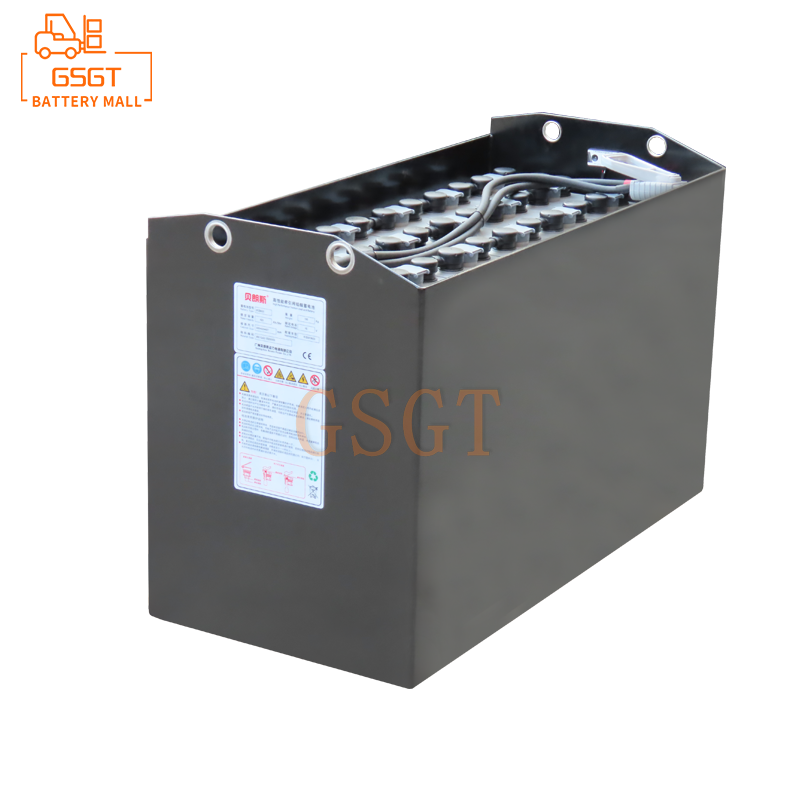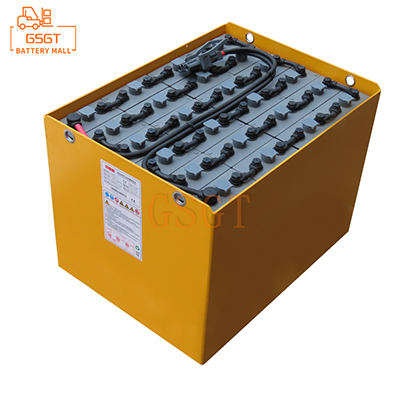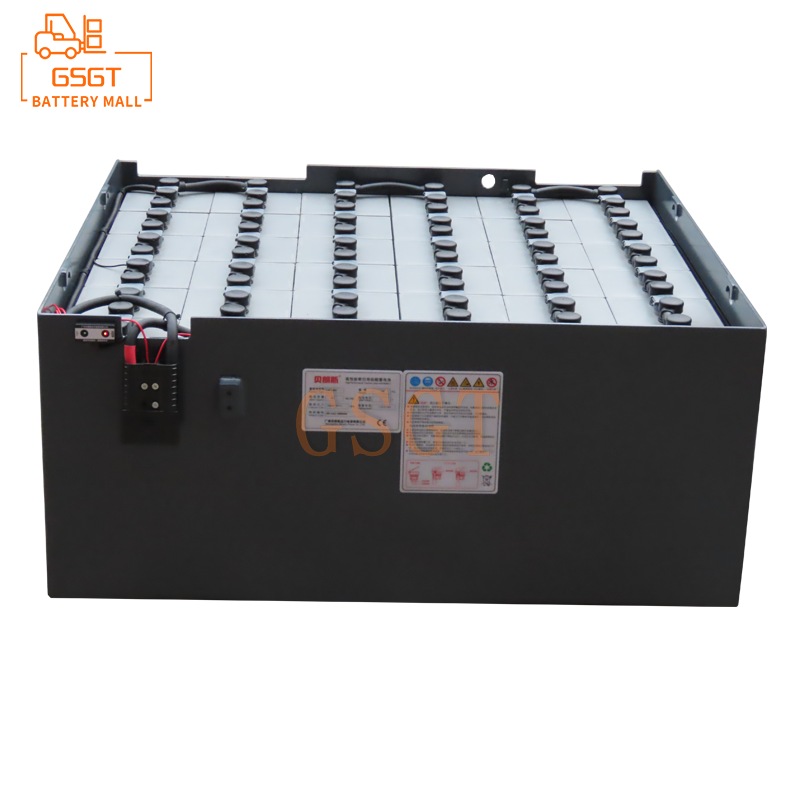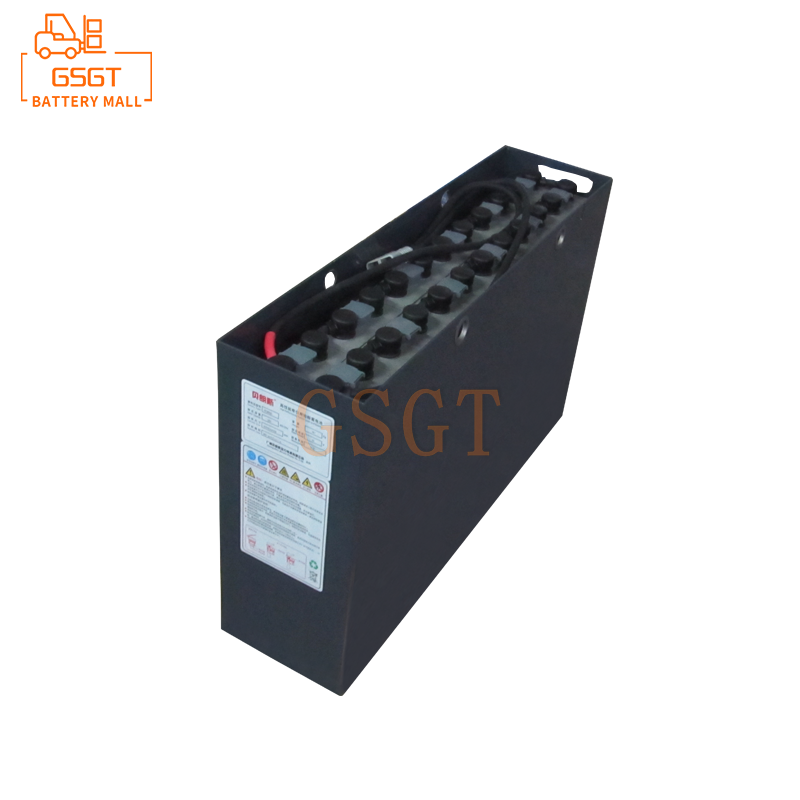Time:2025-05-09 11:30:01
Browse:594
In the field of material handling, forklifts are extremely crucial equipment, and forklift lead-acid batteries, as their important power source, directly affect the performance, efficiency and operating costs of forklifts. Different working scenarios have different requirements for forklift lead-acid batteries. How to accurately select suitable products has become the focus of attention for many enterprises. This article will delve into the key points for selecting lead-acid batteries for forklifts in different scenarios.
Types and characteristics of lead-acid batteries for forklifts
Ordinary lead-acid battery
Ordinary lead-acid batteries, also known as open-type lead-acid batteries, have a dilute sulfuric acid solution as the internal electrolyte, with the plates directly immersed in it. This type of battery has a simple structure, mature technology, high cost performance and relatively low initial purchase cost. It can output a large current and is suitable for the high-power start-up requirements of forklifts within a short period of time. However, during the use of ordinary lead-acid batteries, the electrolyte is prone to evaporation, so distilled water needs to be added regularly and maintenance is relatively frequent. Meanwhile, during the charging process, flammable and explosive gases such as hydrogen are produced, which imposes high requirements on the ventilation conditions of the charging environment.
Maintenance-free lead-acid battery
Maintenance-free lead-acid batteries, such as the common AGM batteries and GEL batteries. AGM batteries use adsorption-type glass fiber separators, which adsorb the electrolyte within the separators, preventing the flow of the electrolyte and significantly reducing the risk of leakage. It has good sealing performance and high gas recombination efficiency. Under normal usage conditions, no electrolyte needs to be added, reducing maintenance workload. GEL batteries convert the electrolyte into a gel-like state, further enhancing the battery's shock resistance and leakage resistance, making it suitable for more severe working environments. Maintenance-free lead-acid batteries have a relatively long service life, a low self-discharge rate, and can store electricity for a long time. However, their price is usually higher than that of ordinary lead-acid batteries.
Deep-cycle lead-acid battery
Deep-cycle lead-acid batteries are specially designed for application scenarios that require long-term and deep discharge. Its plates are manufactured with special materials and processes, capable of withstanding multiple deep discharges without affecting performance. Compared with ordinary lead-acid batteries, deep-cycle lead-acid batteries perform better in terms of capacity retention rate and cycle life. It can stably provide power support during the continuous operation of the forklift and is suitable for scenarios with high requirements for endurance and battery durability. However, the charging time of deep-cycle lead-acid batteries is relatively long, and their price is also relatively high.
The requirements for forklift lead-acid batteries in different operation scenarios
Indoor warehouse handling scene
The indoor warehouse environment is relatively stable, but the space is limited, which requires a high level of mobility and operational flexibility of forklifts. In this scenario, forklifts usually need to frequently start, stop and turn to load, unload and transport goods. Due to the relatively limited indoor ventilation conditions, maintenance-free lead-acid batteries, such as AGM batteries, should be given priority. This type of battery has good sealing performance and generates less gas during charging and use, which can effectively reduce safety risks. Meanwhile, the transportation distance of indoor warehouses is generally short, and the requirement for battery life is relatively low. However, frequent starts and stops require the battery to have a good ability to discharge large currents instantaneously. Both ordinary lead-acid batteries and maintenance-free lead-acid batteries can meet this demand. When choosing battery capacity, it can be determined based on the operation intensity of the forklift and the duration of a single operation.
Outdoor logistics park operation scene
The outdoor logistics park is large in area, and forklifts need to travel a long distance to transfer and load/unload goods. The working environment is complex and one may encounter bumpy roads, dust and other conditions. For this kind of scenario, deep-cycle lead-acid batteries are a relatively ideal choice. It has excellent endurance and can meet the needs of forklifts for long-term operation over a large range. Meanwhile, the structural design of deep-cycle lead-acid batteries enables them to better adapt to bumpy roads and have better shock resistance. Considering the good ventilation of the outdoor environment, ordinary lead-acid batteries can also be an alternative, but it is necessary to pay attention to regular maintenance and care to prevent the electrolyte from drying up and the plates from sulfating.
Low-temperature operation scenarios in cold storage
The low ambient temperature in cold storage poses a great test to the performance of lead-acid batteries in forklifts. Under low-temperature conditions, the viscosity of the electrolyte in the battery increases, and the diffusion rate of ions slows down, resulting in an increase in the internal resistance of the battery and a decline in capacity and charge-discharge performance. Therefore, forklifts used in cold storage operations need to be equipped with lead-acid batteries specifically designed for low-temperature environments. This type of battery usually adopts a special electrolyte formula and plate materials, which can maintain good performance at low temperatures. In terms of capacity selection, as low temperatures can cause battery capacity to decline, it is advisable to choose batteries with a larger capacity than those under normal temperature conditions to ensure the normal operation time of forklifts in cold storage.
A dock operation scene with frequent starts and stops
The operations at the wharf are very busy. Forklifts need to frequently load, unload, handle and transport goods over short distances, with an extremely high start-stop frequency. This working condition has extremely high requirements for the battery's instantaneous high-current discharge capacity and cycle life. Deep-cycle lead-acid batteries can better cope with the demand for sudden large currents when frequently started and stopped. Moreover, their long cycle life can effectively reduce battery wear caused by frequent charging and discharging, and lower the frequency and cost of battery replacement. Meanwhile, the wharf environment is spacious and well-ventilated. Ordinary lead-acid batteries and maintenance-free lead-acid batteries can also be considered. However, in terms of long-term usage cost and performance stability, deep-cycle lead-acid batteries have more obvious advantages.
Key factors for selecting lead-acid batteries suitable for forklifts
The types and specifications of forklifts
Different types and specifications of forklifts have different requirements for battery voltage, capacity and size. When choosing a battery, it is necessary to ensure that the battery voltage matches the electrical system of the forklift; otherwise, it may damage the motor and controller and other components of the forklift. At the same time, the appropriate battery capacity should be determined based on the rated load and operation intensity of the forklift. Generally speaking, the greater the load and the higher the operation intensity, the greater the battery capacity required. In addition, attention should also be paid to the size and weight of the battery to ensure that it can be smoothly installed on the forklift without affecting the balance and operational performance of the forklift.
Work time and frequency
If a forklift needs to operate continuously for a long time or at a very high frequency, then it is necessary to choose a battery with large capacity and long cycle life, such as deep-cycle lead-acid batteries. This can reduce the frequency of charging, improve work efficiency, and at the same time extend the battery's service life and lower operating costs. On the contrary, if the forklift operation time is short and the operation frequency is low, then a small-capacity and relatively low-priced ordinary lead-acid battery or maintenance-free lead-acid battery can be chosen.
Charging facilities and conditions
Charging facilities and conditions are also important factors to consider when choosing lead-acid batteries for forklifts. If the internal charging facilities of an enterprise are complete, with good ventilation conditions and suitable charging equipment, then ordinary lead-acid batteries can be chosen. They have relatively lower requirements for charging equipment and lower costs. However, if the charging space is limited, the ventilation conditions are poor, or if one hopes to reduce the workload of charging and maintenance, then maintenance-free lead-acid batteries are more suitable. In addition, the limitation of charging time also needs to be taken into account. If the forklift has a short charging time during operation intervals, a battery type with a faster charging speed can be selected, or a fast charging device can be equipped.
Budget and cost considerations
Budget and cost are issues that enterprises cannot avoid when choosing lead-acid batteries for forklifts. The initial purchase cost of ordinary lead-acid batteries is low, but their maintenance cost is high. They require regular addition of electrolyte and inspection of battery status, and their service life is relatively short. Maintenance-free lead-acid batteries have a moderate price and require little maintenance, but they are slightly inferior to deep-cycle lead-acid batteries in terms of performance and cycle life. Although deep-cycle lead-acid batteries are relatively expensive, they have excellent endurance and long cycle life. From the perspective of long-term usage costs, they may be more economical and cost-effective. Therefore, when choosing batteries, enterprises should comprehensively consider factors such as the initial purchase cost, maintenance costs during use, and the battery's service life, and conduct a comprehensive cost-benefit analysis to determine the most suitable battery solution for themselves.
When selecting suitable lead-acid batteries for forklifts in different scenarios, it is necessary to comprehensively consider multiple factors such as battery type, characteristics of the working scenario, parameters of the forklift itself, charging conditions, and cost. Only by precisely matching the demands of all aspects can high-performance and cost-effective lead-acid batteries be selected for forklifts, thereby enhancing the operational efficiency of forklifts and reducing the operating costs of enterprises.

$2450

$3405

$4045

$1060

MESSAGE
Professional And Efficient
Security
Affordable Price
Professional Services